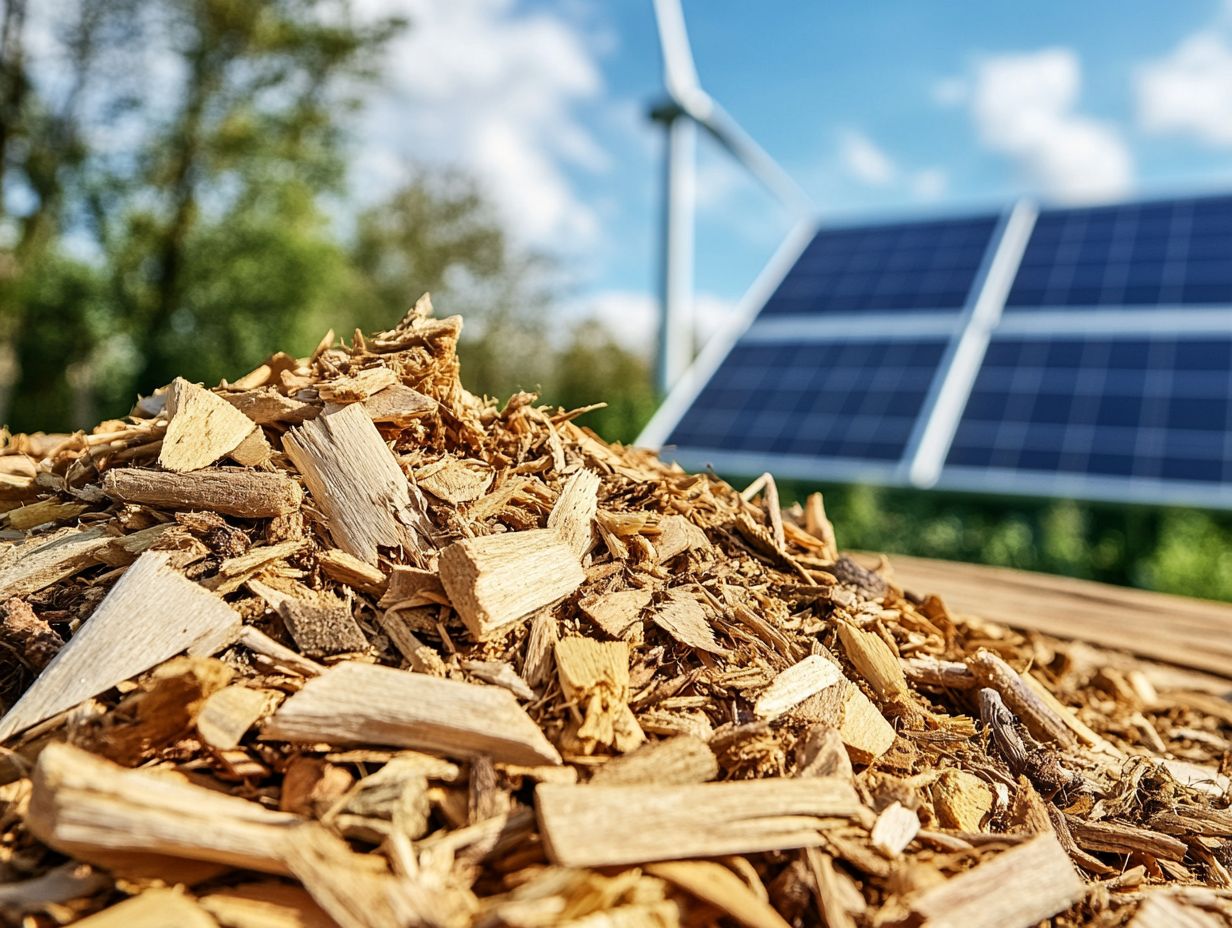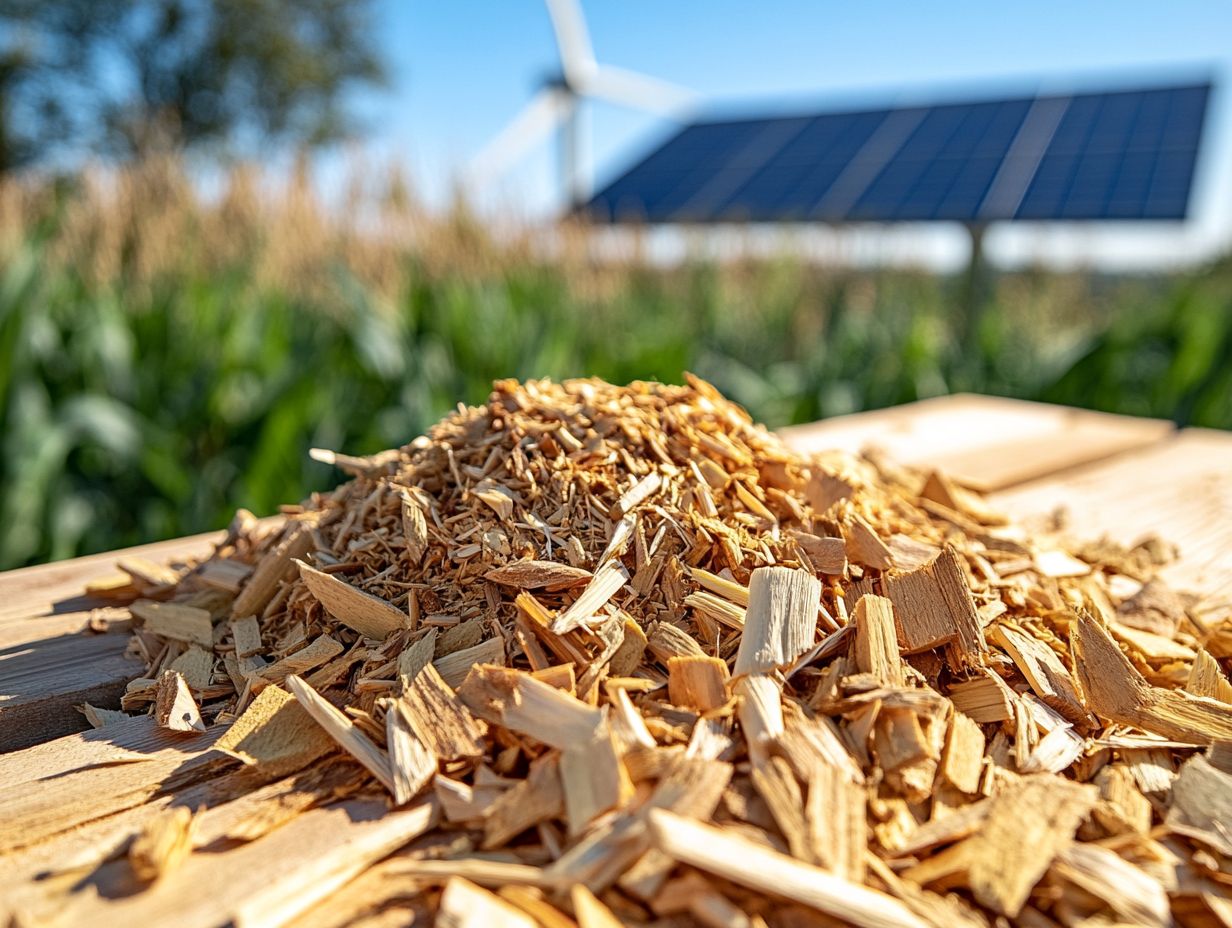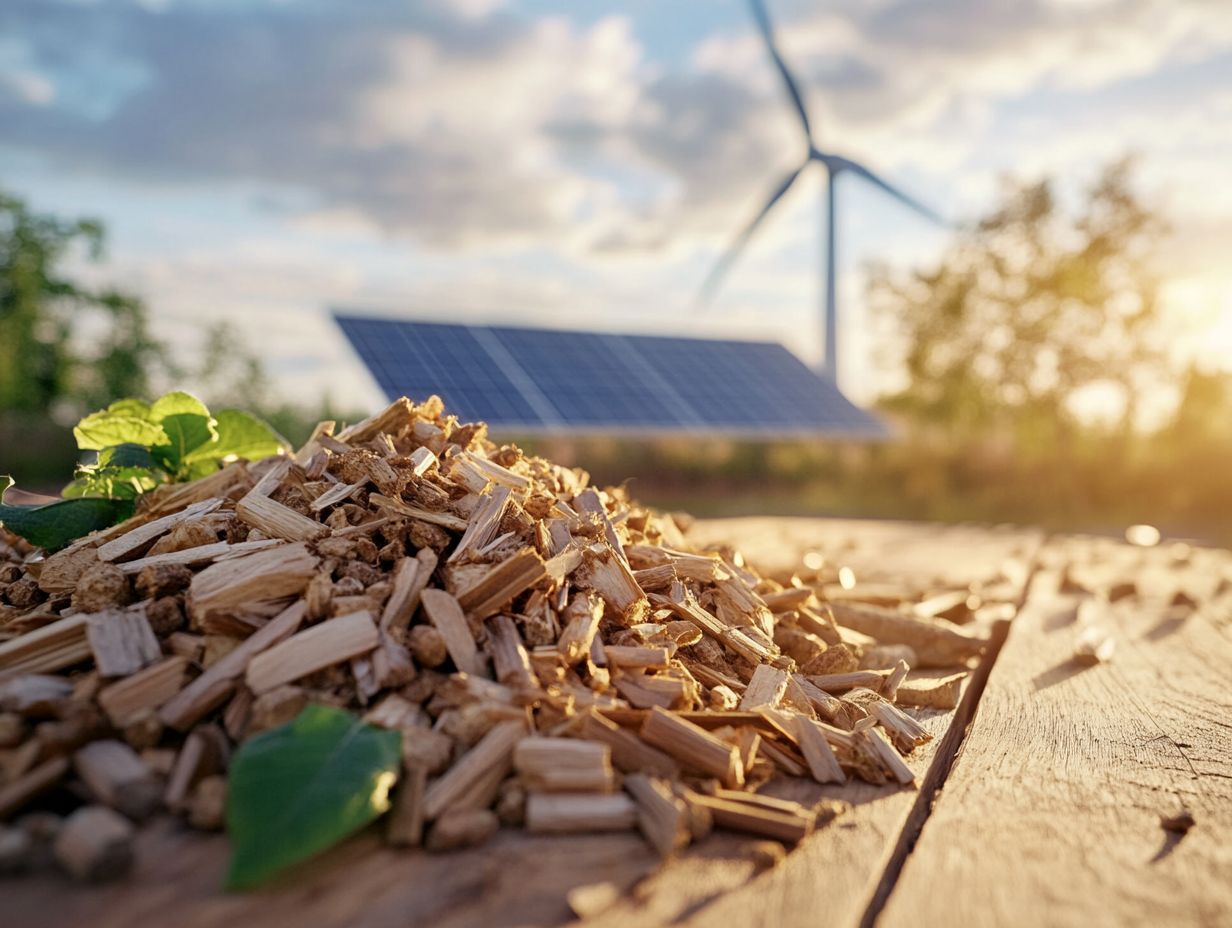What is Biomass Energy?
Biomass energy is a pivotal subject in your pursuit of sustainable energy solutions. As you explore its diverse forms ranging from organic materials harnessed for energy production to advanced conversion technologies you’ll find that biomass presents notable environmental and economic advantages.
However, let’s tackle the challenges head-on that accompany its broader adoption. Explore with us as we unravel the complexities of biomass energy, examining its potential for future growth and its critical role in shaping the energy landscape.
Contents
Key Takeaways:

- Biomass energy is a form of renewable energy that uses organic materials such as wood, crops, and waste to produce electricity, heat, and fuel.
- There are various types of biomass, including wood, agricultural crops, and municipal solid waste, that can be used for energy production.
- Biomass energy has numerous benefits, such as reducing greenhouse gas emissions, creating jobs, and promoting local economies.
Explanation of Biomass Energy
Biomass energy represents a compelling form of renewable energy derived from organic materials like agricultural residues and wood processing waste. You can convert these materials into biofuels and bioproducts through a variety of processes.
As a key player in the energy production landscape, biomass absorbs carbon dioxide during its growth and releases it upon conversion. This process reduces greenhouse gas emissions and promotes energy sustainability.
The sources of biomass energy are impressively diverse, stretching far beyond just crop waste. They include energy crops like switchgrass and miscanthus, as well as algae and even animal manure.
This versatility paves the way for numerous applications, such as heating, electricity generation, and transportation fuels. By harnessing biomass for energy, you can fulfill global energy consumption demands in a more sustainable manner while supporting waste reduction and stimulating local economies.
As the world confronts the pressing challenge of climate change, reducing reliance on fossil fuels while enhancing the use of biomass energy can lead to a significant decrease in greenhouse gas emissions. This shift holds the potential to transform the energy landscape and pave the way for a greener future.
Types of Biomass
Biomass comprises a diverse array of organic materials, categorized into agricultural residues, energy crops, algae, and various waste products such as municipal solid waste and food waste. Each of these sources plays a distinctive role in biomass energy production.
These biomass types not only offer substantial energy potential, but they also play a crucial part in waste reduction initiatives and promote sustainability.
Organic Material Used for Energy Production
Organic materials for energy production include a fascinating array of biomass feedstocks. You have agricultural residues like straw and corn stalks, wood processing waste from lumber mills, energy crops such as switchgrass, and even food waste from homes and industries.
Each of these feedstocks brings its own unique qualities that influence yields and efficiency in energy conversion. For example, agricultural residues are often abundant and low-cost, making them prime candidates for transformation into bioethanol a sustainable alternative to fossil fuels.
Wood processing waste, rich in lignin, is essential for generating heat and power through combustion or gasification processes. Energy crops, tailored specifically for high biomass production, offer promising outputs when converted via anaerobic digestion or fermentation.
Food waste, often overlooked, holds incredible potential for creating biogas. This demonstrates how everyday organic materials can be repurposed into viable sustainable energy solutions.
In conclusion, biomass energy offers an exciting path toward a sustainable energy future. By exploring its potential and tackling challenges, we can unlock the benefits of this renewable resource together.
Benefits of Biomass Energy

Biomass energy has many advantages. It contributes to sustainable energy production, reduces greenhouse gas emissions, and enhances the carbon cycle.
By harnessing waste materials and promoting energy independence, biomass diminishes dependence on fossil fuels. This approach also stimulates economic growth within the industrial sector. As a result, biomass is a key player in the journey toward a more sustainable future.
Environmental and Economic Advantages
The environmental advantages of biomass energy are compelling. It holds remarkable potential for emissions reduction and can significantly lower overall greenhouse gas emissions compared to fossil fuels.
Beyond its ecological benefits, biomass energy drives economic growth, especially in rural communities. Here, job creation can have a transformative effect. By using local agricultural residues and dedicated energy crops, this renewable energy source opens the door to new employment opportunities, from cultivation and harvesting to processing and distribution.
As the demand for biomass grows, it enhances energy security by decreasing reliance on imported fossil fuels. This not only stabilizes local economies but also fosters innovation in sustainable practices, aligning with broader goals of environmental stewardship and renewable energy development.
Challenges and Limitations
What are the challenges in adopting biomass energy? Despite its advantages, we face several limitations. These include concerns surrounding biomass utilization, environmental impacts, and the sustainability of raw materials used in the energy process.
Competition for land, water usage, and the efficiency of biomass processing are just a few factors that can impede biomass from emerging as a premier renewable energy solution.
Obstacles to Widespread Adoption
The path to widespread adoption of biomass energy is fraught with obstacles. These include challenges related to feedstock availability, technology, and ever-changing environmental regulations. Such issues can discourage investment and stifle innovation in biomass technologies.
Economic factors significantly influence this landscape. Fluctuating market prices for biomass feedstock can affect profitability and complicate long-term planning. The conversion processes often face technological challenges, such as limitations in efficiency and the need for cost-effective pre-treatment methods.
Regulatory hurdles, including stringent emissions standards and land use restrictions, add another layer of complexity to harnessing biomass energy. These challenges create uncertainty, but with careful navigation, we can unlock the full potential of biomass energy!
Biomass Energy Technologies

Biomass energy technologies encompass various methods that transform biomass into usable energy forms. This includes thermal conversion techniques (methods that convert biomass into heat or fuel) such as direct combustion, pyrolysis, and gasification, alongside anaerobic decomposition processes that yield biopower.
By understanding these technologies, you gain insight into how renewable resources can be harnessed effectively.
Methods of Converting Biomass into Energy
The primary methods for converting biomass into energy include thermal conversion processes, which are methods that convert heat from biomass into energy. These processes encompass direct combustion, pyrolysis, and gasification, each offering unique mechanisms and energy outputs.
Direct combustion is the simplest approach. It involves burning biomass to generate heat, which can then be harnessed to produce electricity.
Pyrolysis uses thermal decomposition of organic materials at high temperatures without oxygen. This yields a blend of bio-oil, char, and syngas, which can be refined into various fuels.
Gasification further elevates the process by converting solid biomass into syngas, primarily composed of hydrogen and carbon monoxide, through a controlled oxidation process.
These methods vary in efficiency based on the type of feedstock and environmental conditions. Their applications range from established power plants to cutting-edge biorefineries dedicated to sustainable energy solutions.
Future Prospects for Biomass Energy
The future of biomass energy looks bright, full of exciting opportunities! It’s fueled by robust growth potential in renewable energy markets and significant advancements in biomass technologies.
This momentum is further supported by favorable policies designed to promote sustainability and reduce emissions, positioning biomass as a key player in the evolving energy landscape.
Potential Growth and Development
The potential for growth and development in the biomass industry is remarkable. Innovative technologies are emerging to enhance both efficiency and sustainability in the renewable energy sector.
As you navigate this evolving landscape, you’ll discover various avenues ripe for exploration, including advancements in conversion processes and the implementation of cleaner methods to extract energy from organic materials.
Current industry trends emphasize integrating biomass solutions with existing energy infrastructures, boosting reliability and helping to reduce carbon footprints, particularly through emissions reduction.
Emerging technologies such as anaerobic decomposition the breakdown of organic matter without oxygen and gasification are set to transform biomass utilization. These developments, coupled with supportive policy enhancements like incentives for renewable energy initiatives and the promotion of biofuels, are stimulating investment and research in this vibrant sector.
Together, these elements position biomass as a formidable contender in the shift toward a more sustainable energy future.
Frequently Asked Questions

What is Biomass Energy?
Biomass energy is a renewable energy source derived from organic materials, such as plants and animals. These materials can be used to produce heat, electricity, or fuel.
How is Biomass Energy produced?
Biomass energy is produced through various processes such as combustion, gasification, and anaerobic digestion. These processes convert biomass into different forms of energy, including heat, gas, or liquid fuels.
What are the benefits of Biomass Energy?
Biomass energy is considered a sustainable and environmentally friendly energy source. It reduces greenhouse gas emissions and promotes the use of organic waste, including food waste and agricultural residues. It also creates job opportunities in the agricultural and forestry sectors, contributing to the carbon cycle by acting as a carbon sink.
Join us in exploring the exciting world of biomass energy!
What are the types of Biomass Energy?
Biomass energy comes in three main forms: solid, liquid, and gas. Solid biomass includes materials like wood, crop residues, and municipal waste. Liquid biomass is mainly biofuels, such as ethanol and biodiesel. Gas biomass involves biogas, syngas, and methane.
Is Biomass Energy a Reliable Source of Energy?
Yes, biomass energy is reliable because it can be produced locally. This reduces dependence on foreign energy sources.
It s also versatile, usable for heating, electricity, and transportation.
What are the Potential Challenges of Using Biomass Energy?
One challenge is the availability and consistency of biomass materials. Another concern is that production costs may be higher than traditional fossil fuels.
Sustainable practices are key to making biomass energy effective long-term.






